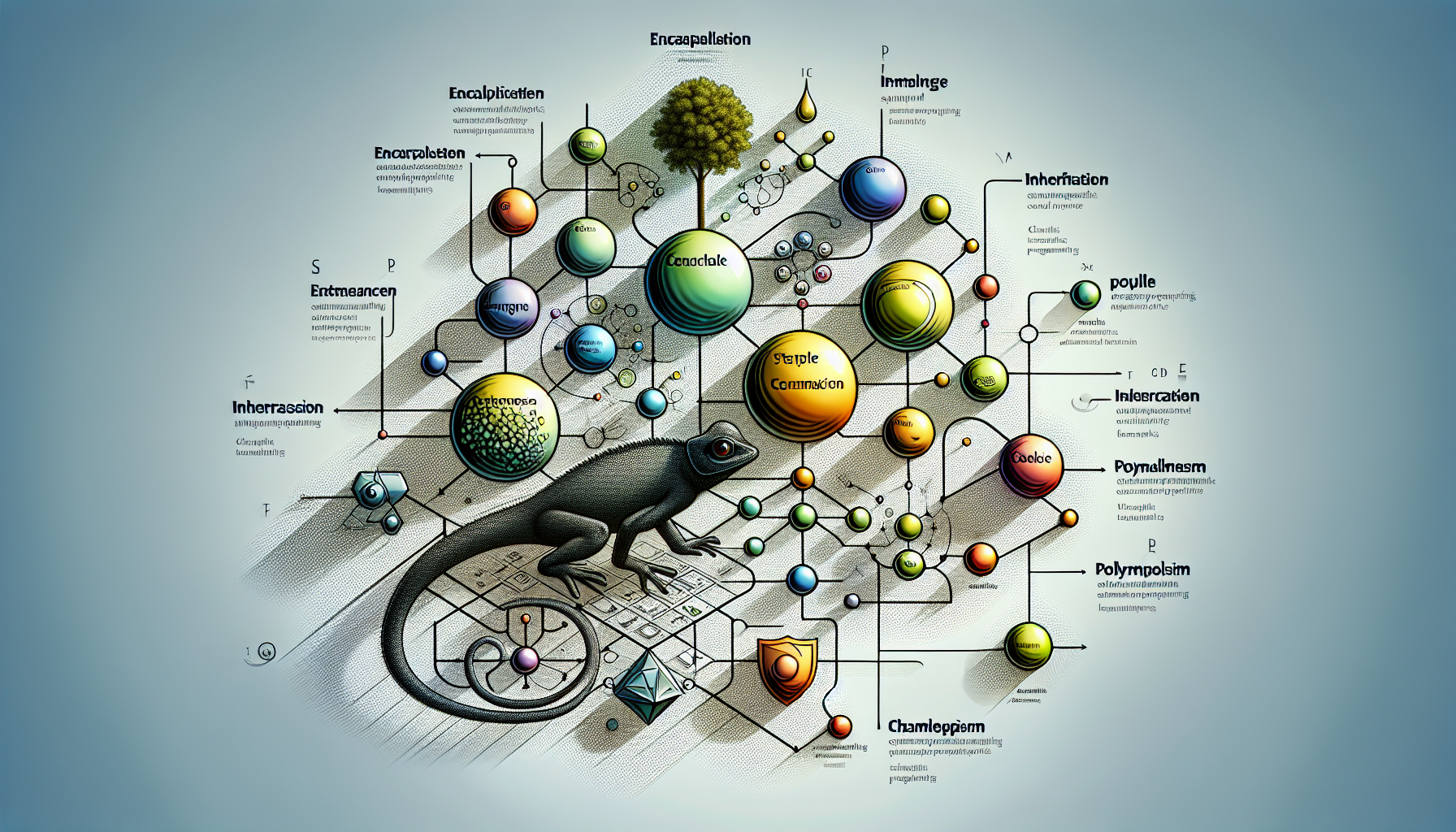Fundamentals of Object Oriented Programming
There Object Oriented Programming (OOP) is a programming paradigm that uses “objects” to design computer applications and programs. These objects represent real-world entities and allow developers to create more flexible, scalable, and maintainable software. In this article, we will explore the basic concepts that form the foundation of OOP.

Abstraction
L’abstraction is the process by which a programmer hides all irrelevant details of an object to only show the user the important features. This makes it simpler to understand how objects work without worrying about their internal complexity.
Encapsulation
L’encapsulation is a technique which consists of grouping data and the methods which manipulate it within the same unit, often called a class. Encapsulation also protects data integrity by only allowing modification via defined methods, preventing direct unauthorized access.
Legacy
L’legacy is a feature of OOP that allows you to create a new class based on an existing class. The new class, called a derived class, inherits the attributes and methods of the base class, allowing code reuse and the creation of class hierarchies.
Polymorphism
THE polymorphism is the ability of a method to do different actions depending on the object it is called on. There are two main types of polymorphism: overloading polymorphism (several methods share the same name but with different parameters) and inheritance polymorphism (a derived class uses a method with the same name as a method of its class parent).
Classes and objects
THE classes are models, or blueprints, that are used to create individual instances called objects. Each object created from a class can have its own values for the class’s attributes, but shares the same methods.
Constructors and destructors
A constructor is a special method of a class that is called automatically when the object of that class is created. It is generally used to initialize the object’s attributes. A destructive, for its part, is called when an object is about to be destroyed, allowing the allocated resources to be freed.
The methods
THE methods are functions defined inside a class that describe behaviors or actions that an object can perform. Each method can work with the object’s internal attributes to perform a specific task.
Attributes
THE attributes are variables that are defined inside a class and which represent the state or specific characteristics of an object. Attributes can be of different data types, such as numbers, strings, or objects of other classes.
Visibility: Public, Private and Protected
Audience, Private And Protected are visibility modifiers that control access to a class’s attributes and methods. Public members can be accessed from anywhere, private members can only be accessed in the class where they are defined, and protected members can be accessed in the class where they are defined as well as their derived classes.
Association, Aggregation and Composition
In OOP, the terms association, aggregation And composition describe the different ways in which objects can be linked together. Association is a relationship between two objects that are independent of each other, aggregation is a “whole-part” relationship where parts can exist separately from the whole, and composition is a “whole-part” relationship “where the parts cannot exist without the whole.
Benefits and Practical Applications of OOP

Benefits of Object Oriented Programming
OOP has multiple advantages which make it a preferred approach for the development of complex software:
- Capsulation: Allows you to encapsulate data and the functions that manipulate it within objects, thus protecting the integrity of the data.
- Abstraction: Simplifies development by allowing the use of high-level concepts without requiring a deep understanding of their internal workings.
- Code reuse: Encourages the sharing and use of existing code as reusable classes, thereby reducing development time and maintenance costs.
- Modularity: Favors the division of the program into independent and interchangeable parts which can be developed and tested independently.
- Polymorphism: Allows objects to be easily interchanged through a common interface, providing great flexibility in programming and system design.
- Legacy: Provides the ability to create derived classes that inherit properties and methods from existing classes, facilitating extension and customization.
Practical applications of object-oriented programming
OOP is used in many fields and for various types of applications. Here are some concrete examples:
- Video game development: Objects can represent characters, obstacles, power-ups, etc., making it easier to manage their states and behaviors.
- Graphical user interfaces (GUI): Each interface element, such as buttons and menus, is an object, making building interactive interfaces more intuitive.
- Database Management Systems: Entities like tables, records, and queries can be modeled as objects to increase efficiency and maintainability.
- Web development: OOP-based frameworks, such as Django for Python or Ruby on Rails for Ruby, use objects to represent requests, responses, and other web components.
- Mobile apps: Platforms such as Android And iOS leverage the OOP model for event handling and manipulation of user interface components.
- Simulation software: To simulate physical, economic or biological systems, the use of objects makes it possible to model the complex interactions between components of the system.
Comparison with other programming paradigms

Imperative Programming
Imperative programming is the oldest and most straightforward paradigm. It consists of describing the steps that the computer must follow to achieve a result. The C language is a typical example of this paradigm.
Benefits :
- Precise control over program flow and system resource usage.
- Conceptually simple and straightforward to understand.
Disadvantages:
- Can become very complex for large programs.
- Lack of code flexibility and reusability.
Declarative Programming
Unlike imperative programming, declarative programming focuses on what the result should be without explicitly describing how to achieve it. SQL and HTML are examples of declarative languages.
Benefits :
- Simplicity of expression of the desired result.
- Abstraction of implementation details, which often allows for better optimization by the compiler or interpreter.
Disadvantages:
- Less control over the exact process the machine follows.
- May be less intuitive for developers used to a more procedural approach.
Functional Programming
Functional programming is a subset of declarative programming that treats calculations like the evaluation of mathematical functions. Haskell and Scala are languages that support this paradigm.
Benefits :
- Facilitates reasoning on the code and ensures great modularity.
- Ideal for parallel programming and distributed systems due to the lack of side effects.
Disadvantages:
- May present a steep learning curve for unfamiliar developers.
- Performance may be less predictable due to high-level abstractions.
Object Oriented Programming (OOP)
OOP is based on the concept of “objects”, which are instances of “classes”. Objects contain both data and methods. Java and Python are languages that embody this paradigm.
Benefits :
- Increases code reusability and facilitates maintenance.
- Promotes data encapsulation and abstraction.
Disadvantages:
- Overabstraction can lead to unnecessary complexity.
- May lead to reduced performance due to additional layers of abstraction.
Responsive Programming
Reactive programming is a paradigm focused on managing data flows and propagating changes. It is particularly effective for applications with interactive user interfaces or real-time systems.
Benefits :
- Improves management of complex asynchronous systems.
- Promotes more readable and less error-prone code in highly interactive contexts.
Disadvantages:
- Requires a thorough understanding of responsive concepts to use effectively.
- Reaction sequences can sometimes be difficult to debug.
In conclusion, the choice of a programming paradigm often depends on the nature of the problem to be solved, the preference of the developer and the performance constraints of the system. Understanding their differences and applications can help developers choose the right approach for their project and write cleaner, more maintainable, and more efficient code.






